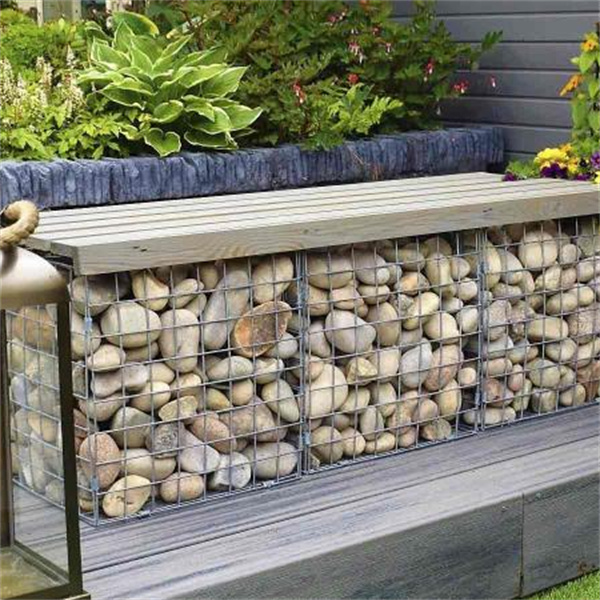Nov . 17, 2024 14:44 Back to list
gabion panels manufacturer
The Role of Gabion Panels in Modern Construction A Focus on Manufacturers
Gabion panels have emerged as essential components in modern construction and landscaping, providing effective solutions for various structural and aesthetic challenges. These versatile structures, typically made from wire mesh and filled with stones or other materials, have gained popularity due to their durability, ecological advantages, and aesthetic appeal. This article explores the significance of gabion panels, the manufacturing process, and their applications in today’s construction industry, focusing on the key players in this market.
What Are Gabion Panels?
Gabion panels are large, wire mesh containers filled with rocks, stones, or other materials, creating a robust structure that serves multiple purposes. Originally used in civil engineering for erosion control and retaining walls, gabions have become increasingly popular in landscaping, architecture, and environmental conservation. Their design allows for natural drainage, which helps prevent water buildup and subsequent erosion, making them ideal for various geographic areas.
Benefits of Gabion Panels
One of the most notable advantages of gabion panels is their eco-friendliness. Unlike traditional concrete structures, which require extensive energy and resources to produce, gabions can be filled with locally sourced materials. This not only reduces the carbon footprint associated with transport but also integrates the structure into its natural surroundings. Additionally, gabions allow vegetation to grow within and around them, promoting biodiversity and enhancing the overall aesthetic of a site.
Another significant benefit is their resistance to harsh weather conditions. Gabion structures are less susceptible to cracking and erosion than conventional materials, resulting in extended lifespan and reduced maintenance costs. Their flexibility allows them to absorb and adapt to pressure, making them ideal for locations prone to shifting soils or seismic activity.
The Manufacturing Process
The manufacturing of gabion panels involves several key steps, ensuring that the final product meets high standards of quality and durability. The primary materials used are galvanized or PVC-coated wire, which provide resistance to rust and corrosion, ensuring longevity in various environmental conditions. Manufacturers typically begin by weaving the wire into mesh panels, which are then assembled into individual boxes or baskets. These units are then connected to form larger structures as needed.
gabion panels manufacturer

Quality control is an essential aspect of the manufacturing process. Leading gabion panel manufacturers regularly conduct tests on their materials to ensure they meet industry standards. This includes checks for tensile strength, corrosion resistance, and overall structural integrity. By adhering to these standards, manufacturers can guarantee that their products will perform effectively over time.
Key Manufacturers in the Industry
The gabion panel manufacturing industry is populated by several key players who have established a reputation for quality and innovation. Companies specializing in construction materials often offer gabion solutions, including manufacturers who focus exclusively on wire mesh products. These manufacturers not only provide standard sizes but also customize gabion panels to meet specific project requirements.
In addition to traditional construction firms, some companies are integrating advanced technology into their manufacturing processes. Automation and innovative design techniques have resulted in more efficient production lines, allowing for faster delivery times and lower costs. Eco-conscious manufacturers are also taking steps to source sustainable materials and adopt greener practices in their production facilities.
Applications of Gabion Panels
Gabion panels are incredibly versatile and find applications across various sectors. In civil engineering, they are predominantly used for retaining walls, flood control systems, and foundations. Their ability to absorb shock makes them valuable in areas prone to landslides and erosion. In landscaping, gabions are utilized as decorative features, planters, and privacy screens, while also supporting local flora.
Moreover, gabions have begun to play a role in art and architecture, with several artists and architects incorporating these structures into their designs for both functional and aesthetic purposes. This trend highlights the growing recognition of gabions as not just practical construction tools but also as elements that can enhance public and private spaces.
Conclusion
Gabion panels manufactured by leading companies are redefining the landscape of construction and environmental management. Their practicality, combined with environmental benefits, positions them as a significant resource in contemporary building practices. As the demand for sustainable and innovative solutions continues to rise, the future of gabion panels in the construction industry looks promising, making them a smart choice for developers and architects around the world.
-
Visualizing Gabion 3D Integration in Urban Landscapes with Rendering
NewsJul.23,2025
-
The Design and Sustainability of Gabion Wire Mesh Panels
NewsJul.23,2025
-
The Acoustic Performance of Gabion Sound Barriers in Urban Environments
NewsJul.23,2025
-
Mastering the Installation of Galvanized Gabion Structures
NewsJul.23,2025
-
Gabion Boxes: Pioneering Sustainable Infrastructure Across the Globe
NewsJul.23,2025
-
Custom PVC Coated Gabion Boxes for Aesthetic Excellence
NewsJul.23,2025
-
Installation Tips for Gabion Wire Baskets in Erosion Control Projects
NewsJul.21,2025






